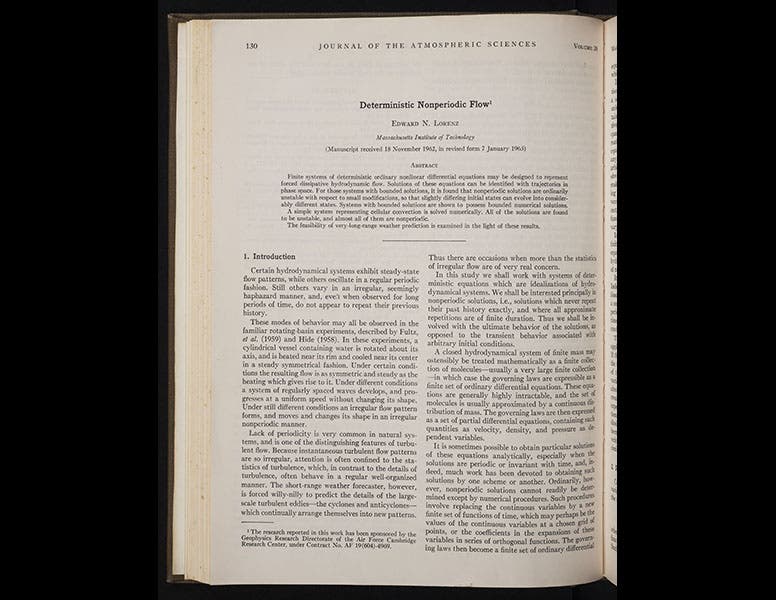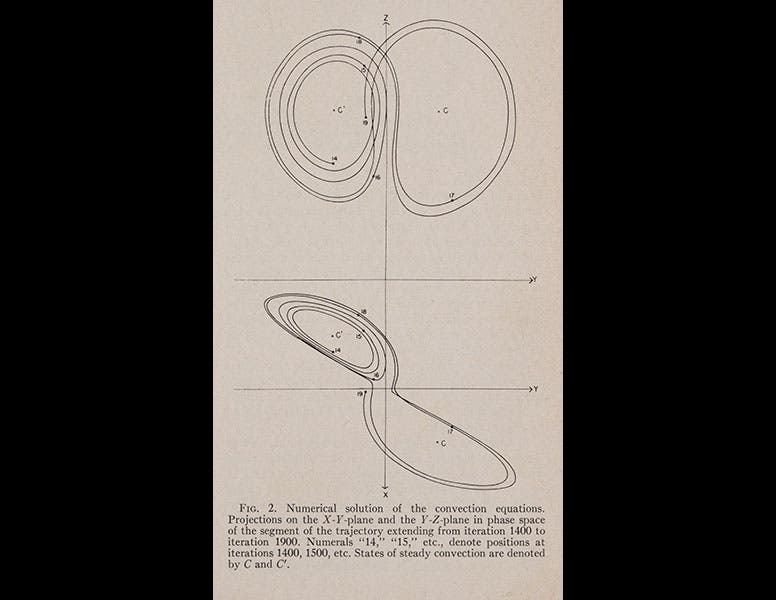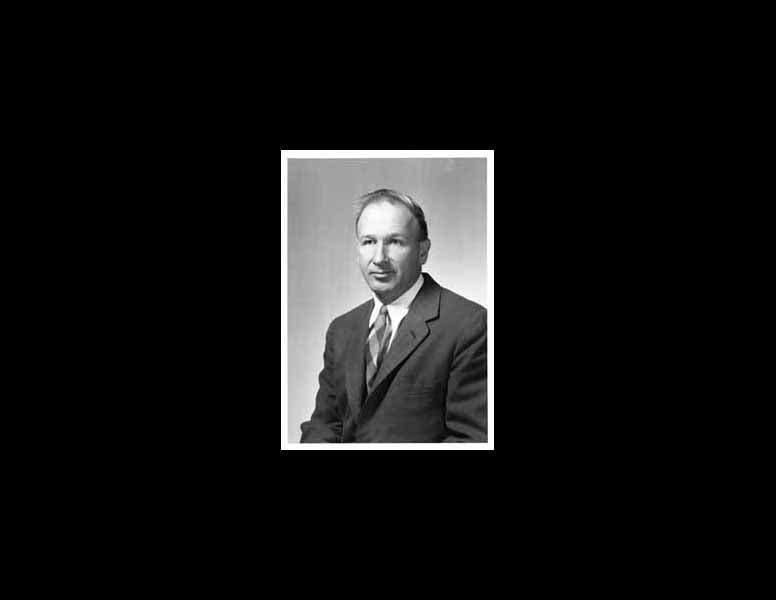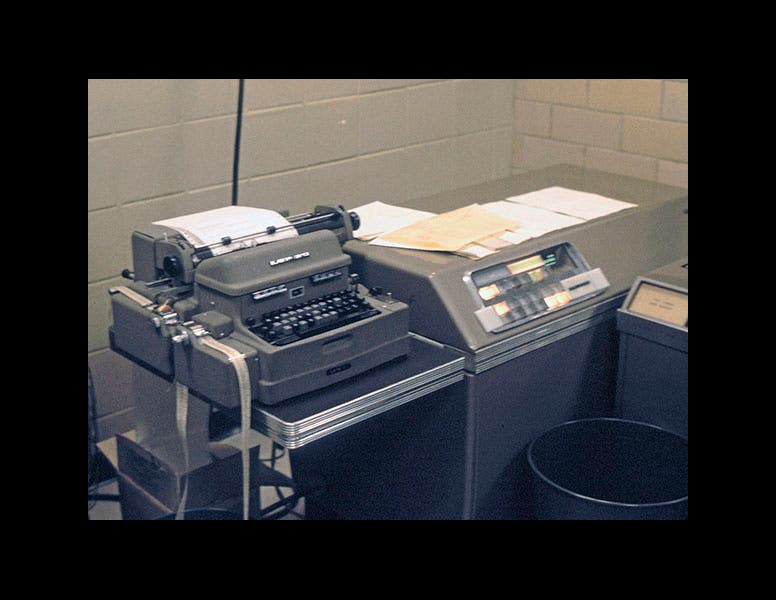Scientist of the Day - Edward Lorenz

Linda Hall Library

Linda Hall Library
Edward Norton Lorenz, an American mathematician and meteorologist, was born May 23, 1917. In 1960, Lorenz installed a Royal McBee LGP-30 computer in his office at MIT and began to try using it to make weather predictions. The LGP-30 (third image) could make some 60 calculations a second, which means it had considerably less computing power than your Fitbit, but it was quite the center of attention in his department, as every minute it would clack out a line of numbers that was different from the previous line of numbers, indicating that predicted weather patterns were changing. All this was fine until one day when Lorenz had to interrupt a sequence that he had already run once before; when he resumed, he manually typed back in all the 3 digit numbers that were in place when he stopped. To his surprise, he found the new predicted weather patterns began to diverge increasingly from the previous predicted patterns, until after a few days of weather-time, they were completely different. Thinking the matter through, Lorenz realized that while the computer printed out three-digit numbers, it actually kept 6 digits in its memory. So the numbers Lorenz punched back in were slightly different--off by less than 1 in a thousand--from the numbers used in the previous run. And yet, that tiny change in the initial conditions was enough to alter the weather pattern completely. Some years later, Lorenz gave a talk with the title: “Does the Flap of a Butterfly’s Wings in Brazil Set off a Tornado in Texas?” The “Butterfly Effect” was born. Lorenz eventually concluded that, since we can never know initial conditions exactly, it was going to be impossible to predict weather patterns more than a few days in advance.
Lorenz published this depressing result in the Journal of the Atmospheric Sciences in 1963 (fourth image). But as sad as this day was for the weather forecasting business, it marked the glorious beginning of a new field, which would come to be called Chaos Theory, the science of Butterfly Effects. Those of you who saw the first Jurassic Park film might recall "chaotician" Ian Malcolm (Jeff Goldblum) trying to explain the butterfly effect to Ellie Sattler (Laura Dern), in making the point that a small unanticipated event could wreak havoc with the supposedly impregnable security of the dinosaur park. Which, to everyone's surprise except Malcolm’s, is exactly what happened, and chaos did indeed ensue.
Our volume of the Journal of the Atmospheric Sciences that contains Lorenz’s seminal paper was long ago removed from its fellows in the Serials collection and now resides on a shelf all its own in the Rare Book Room Cage. Lorenz’s paper also contains the first image of what has come to be called the Lorenz attractor, which traces the path of a chaotic particle moving in a series of closed loops, showing that even chaotic motion has constraints (fifth image). Modern versions of the Lorenz attractor are more attractive (first image) and are said to resemble butterflies, an interesting coincidence.
Some years ago, a tongue-in-cheek scholar noted (in the Annals of Improbable Research) that in subsequent retellings of the Butterfly Effect story, the butterfly moved from Brazil to Peking to Rio, back to Peking, then to Switzerland, Paris, back to Peking, and on to England, Venezuela, and New York. When he graphed the peregrinations of the butterfly, the resulting pattern looked just like the Lorenz attractor. He concluded, appropriately for a chaotician: “The significance or meaning of any of this has yet to be determined”.
Dr. William B. Ashworth, Jr., Consultant for the History of Science, Linda Hall Library and Associate Professor, Department of History, University of Missouri-Kansas City. Comments or corrections are welcome; please direct to ashworthw@umkc.edu.









